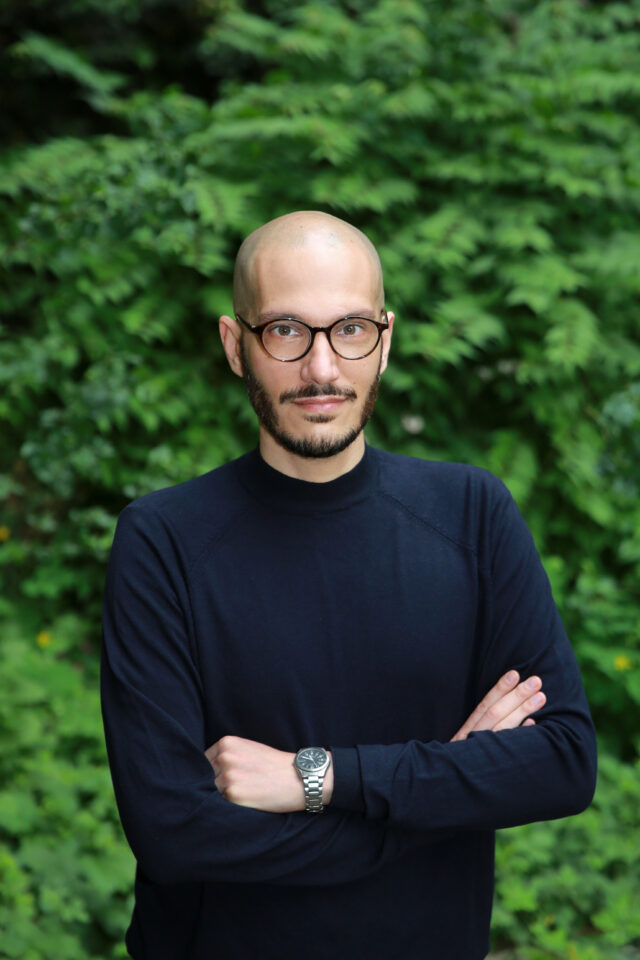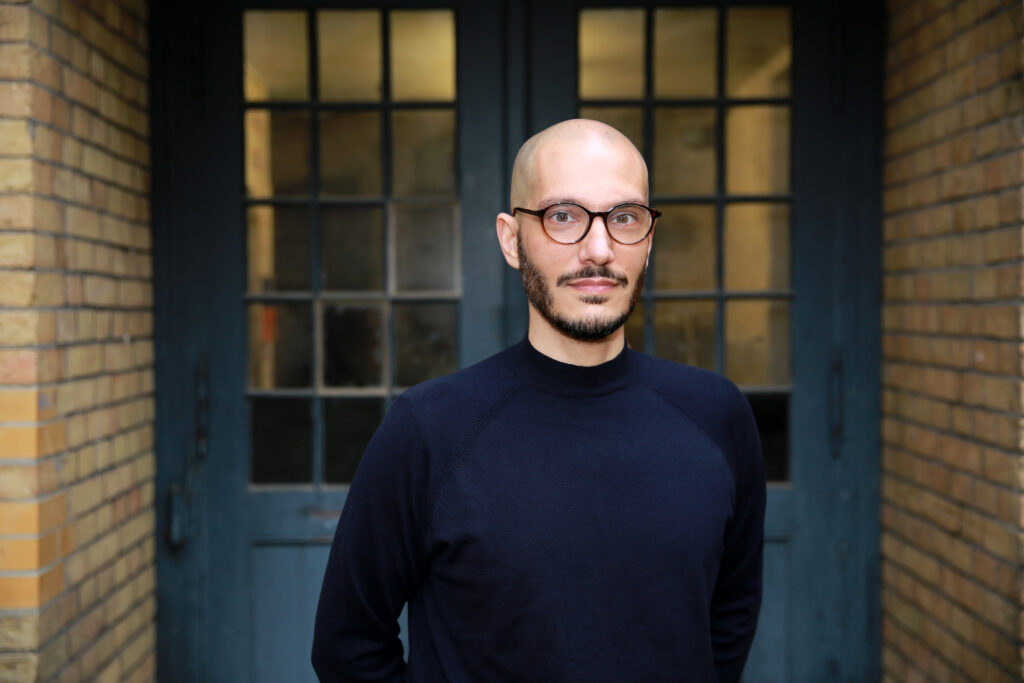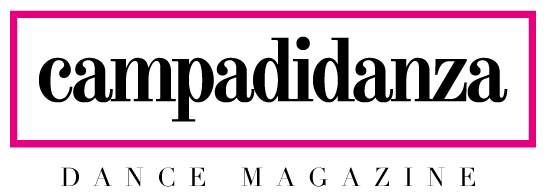
For the English version, please scroll down
BERLINO Incontriamo Ricardo Carmona, che dopo aver lavorato per dieci anni come Dance Curator del teatro HAU Hebbel am Ufer, nel 2022 è passato alla direzione artistica del festival di danza più importante e conosciuto di Berlino: il Tanz im August.
Come ha vissuto questa transizione?
“Poiché il Tanz im August è un festival presentato da HAU, queste due realtà sono strettamente collegate tra loro. Aver lavorato a Berlino in questi ultimi anni mi ha dato una profonda conoscenza della scena artistica della città, di cosa esiste e, di conseguenza, di cosa Tanz im August può offrire. Durante questa transizione, se da un lato ho potuto portare tutta l’esperienza acquisita presso l’HAU, dall’altro ho dovuto affrontare differenze significative nel tipo di programmazione. Ad esempio, il festival si svolge in un arco temporale molto concentrato. L’anno scorso abbiamo presentato 19 spettacoli in tre settimane, ed è frequente spostarsi da un teatro all’altro nella stessa sera. Naturalmente, ciò richiede un approccio diverso. Altra differenza è che ci sono importanti venues coinvolte nel festival, quindi quando pianifico la programmazione degli spettacoli, devo tenere in considerazione anche quest’aspetto. In tal senso, il passaggio dall’HAU al Tanz im August mi ha imposto un cambiamento nel modo di lavorare”.
La scorsa edizione del Tanz im August è stata la sua prima edizione, mi può dire quali sono i criteri con cui ha scelto le compagnie e gli artisti che si sono esibiti per il festival?
“È stata la mia prima edizione e sono stato completamente libero di adottare il mio programma. Lavoro con un approccio induttivo, parlo molto con il mio team, cerchiamo di non imporre concetti ma di prendere in considerazione cosa gli artisti possono offrire e cosa propongono. Mi piace scoprire a cosa siano interessati e cogliere analogie tra coreografi provenienti da paesi anche molto lontani tra loro. In questo modo lascio che emergano i temi che saranno affrontati nel festival. Sono affascinato dal modo in cui i movimenti di danza possono indagare questi temi e di come gli artisti interpretano gli argomenti da trattare. Un altro aspetto che considero sono i diversi linguaggi della danza contemporanea. È altrettanto importante riconoscere e presentare la danza contemporanea che si estende oltre i confini del canone occidentale”.
Negli anni precedenti al 2023, oltre a coreografi emergenti, ho avuto occasione di veder danzare le compagnie di Cunningham, Trisha Brown, Steve Paxton e di assistere a spettacoli di Peeping Tom, Marcos Morau, Sasha Waltz, Wayne McGregor, Jérôme Bel e tanti altri molto affermati. Come mai nell’ultimo Tanz im August, eccezion fatta per Rosas, il cui spettacolo ha un po’ deluso le mie aspettative, mancavano nomi di artisti entrati nella storia della danza?
“Negli ultimi anni ho assistito a un significativo cambiamento generazionale nella scena della danza. È chiaro che esistono nomi rilevanti che hanno fatto la storia della danza contemporanea occidentale, ma oggi anche le nuove generazioni hanno la capacità e la determinazione necessarie per realizzare grandi produzioni. Il festival svolge un ruolo cruciale nel sostenere questi artisti e, nel farlo, si assume anche i rischi di proporre qualcosa di nuovo. Il pubblico, fino ad ora, ha molto apprezzato questi sforzi. L’anno scorso, per esempio, ho proposto spettacoli di compagnie molto conosciute come Rosas, di cui ho invece molto apprezzato la performance che ho trovato uno dei loro migliori spettacoli degli ultimi anni, e ho portato a Berlino giovani compagnie come il balletto di Marsiglia / (LA) HORDE. Il loro show, infatti, era pieno di riferimenti relativi a social media, tic toc, video game. Insomma hanno portato in scena lo spirito delle generazioni più giovani. E questo approccio è qualcosa che voglio continuare a portare avanti anche nelle prossime edizioni del festival”.
Nel festival tenutosi l’estate scorsa è stato posto anche l’accento su questioni molto attuali come quella del gender e dell’ambiente. È stato un caso o anche nella prossima edizione assisteremo a spettacoli dalle tematiche sociali?
“No, non è stato un caso. Credo che quando un artista realizza un’opera, il suo lavoro rifletta il momento, le esperienze e il luogo in cui sta vivendo. Questi temi continueranno a far parte delle prossime edizioni del festival, poiché restano aspetti integranti della nostra vita e della realtà che ci circonda”.
Rispetto alle proposte che riceve, cosa pensa che manchi o le piacerebbe fosse presente nel suo festival?
“Mi piacerebbe fosse ulteriormente sviluppata la relazione tra danza ad ecologia, così come il nostro ruolo nella natura. Anche se è un tema che ho già portato all’interno del festival, trovo che non sia stato ancora sviscerato come meriterebbe. Se penso ad altre forme d’arte, come quelle visuali, mi sembra che questo tema sia stato molto più trattato e sviluppato che nella danza. Rispetto al problema ambiente, ritengo ci siano molte cosa da esplorare, da approfondire, da pensare e che si possano trovare ancora modi diversi di affrontare questo tema attraverso la danza”.
Oltre che come direttore e spettatore avrà senz’altro dei coreografi del passato o del presente preferiti, mi può fare qualche nome?
“Non posso esprimere le mie preferenze perché, come direttore artistico, le mie scelte non si basano esclusivamente sul mio gusto personale, ma sono influenzate da ciò che ritengo gli artisti possano offrire alla città e al pubblico di Berlino. Se il festival si svolgesse altrove, probabilmente farei altre scelte. Oltretutto c’è un team che sceglie con me”.
Mi può dire quale artista le piacerebbe partecipasse al festival, ma che non è ancora riuscito a ‘ospitare’?
“Ciò che abbiamo proposto nell’edizione del 2023 è stato ciò che volevo e sono molto felice del risultato ottenuto. A giudicare dalla reazione del pubblico, posso dire con certezza che anche loro sono stati contenti. Tuttavia già l’anno scorso c’erano artisti che avrei voluto presentare e che per diverse ragioni non hanno potuto partecipare, quindi cercherò di ospitarli nel 2024. Oltretutto non si tratta solo di ciò che mi piacerebbe ma anche di quali artisti vogliono partecipare e credono di poter dare un contributo al festival”.
Qual è la visione e quali gli obiettivi da raggiungere per il prossimo Tanz im August?
“Il focus è sempre il pubblico, che è stato molto generoso col programma proposto e con gli artisti. Per la prossima edizione del Tanz im August voglio continuare a superare i limiti e a provocare riflessioni. In termini di obiettivi, il festival può ancora crescere e avere anche più spettatori. Non parlo in termini numerici, dato che l’anno scorso i teatri erano sempre gremiti, ma di raggiungere anche un pubblico diverso. Ovviamente tutto è connesso al budget che cerchiamo di accrescere con fondi europei. Mi piacerebbe ci fossero maggiori possibilità per riuscire a realizzare tutto ciò che vorremmo”.

After working for 10 years as the Dance Curator at the HAU Hebbel am Ufer theater, you transitioned to the artistic direction of Berlin’s most prominent and renowned dance festival in 2022. How did you experience this transition?
Since Tanz im August is a festival presented by HAU, these two realities are intricately linked. Working in Berlin over the past few years has provided me with a profound understanding of the city’s artistic scene, including what currently exists and, consequently, what Tanz im August can offer. During this transition, while I was able to bring all the experience acquired at the HAU, I also had to navigate significant differences in programming. For instance, the festival occurs within a highly concentrated timeframe. Last year, we presented 19 projects with a total of 47 performances in three weeks, and it’s common to move from one theatre to another on the same evening. Naturally, this requires a different approach. Additionally, different venues involved in the festival as presentation spaces, so when planning the festival, I must take that into consideration. Thus, the transition from HAU to Tanz im August also compelled me to adapt my working methods.
The most recent edition of Tanz im August marked your inaugural tenure. Could you elaborate on the criteria you employed in selecting the companies and artists to perform at the festival?
It was my first edition, and I had complete freedom to craft the program. I employ an inductive approach, collaborating extensively with our team and the artists. Rather than imposing concepts, aim to reflect on what the artists bring forth and suggest. I enjoy understanding their interests and identify similarities among artists, even those geographically distant from each other. This method allows festival themes to naturally emerge. I am fascinated by how choreographers explore these themes and interpret them. Additionally, I take into account the diverse languages and lineages of contemporary dance. It’s equally important to recognize and present contemporary dance that extends beyond the confines of the western canon.
In the years leading up to 2023, I had the opportunity to witness performances by esteemed choreographers such as Cunningham, Trisha Brown, Steve Paxton, as well as attend shows by Peeping Tom, Marcos Morau, Sasha Waltz, Wayne McGregor, Jérôme Bel, and many other accomplished artists. However, in the last Tanz im August, with the exception of Rosas, whose show somewhat disappointed my expectations, why were there no artists who have significantly impacted the history of dance?
In recent years, I’ve witnessed a significant generational shift in the dance scene. While there are undoubtedly influential figures who have shaped the history of western contemporary dance, it’s clear that today’s newer generations possess the talent and determination to create compelling productions in a larger scale. The festival plays a crucial role in supporting these artists while also taking risks by presenting innovative works. Thus far, the audience has shown great appreciation for these endeavors.
For instance, last year, the program included renowned companies like Rosas, whose performance I personally admired and considered one of their best in recent years. At the same time, we introduced to the Berlin audience the Ballet national de Marseille / (LA) HORDE. Their performance was rich with references to social media, and video games, effectively capturing the essence of younger generations. This approach is something I aim to continue in future editions of the festival.
At last summer’s festival, there was a notable focus on contemporary issues such as gender and ecology. Was this merely coincidental, or can we expect to see performances addressing social themes in the upcoming edition as well?
No, it wasn’t a coincidence. I believe that when artists create a piece, their work reflects the moment, experiences, and the environment in which they live. These topics will continue to be part of the next editions of the festival, as they remain integral aspects of our lives and realities that surround us.
Compared to the proposals you receive, what do you think is lacking or what would you like to see included in your festival?
I would like to see the relationship between dance and ecology, as well as our role in nature, further explored. Although I’ve introduced this theme to the festival before, I feel there is more potential to be developed as it deserves. When I consider the realm of visual arts, it appears that this theme has been much more extensively treated and developed compared to dance. In terms of environmental issues, I believe there are numerous aspects to explore, delve into, and contemplate, and there are still various approaches through which dance can address this issue.
In addition to your role as a director and spectator, having studied Dance and Performance in Lisbon, you undoubtedly have personal preferences and favorite choreographers from both the past and present. Could you please share some names and tell me what you admire about them?
I can’t definitively state my preferences because, as artistic director, my choices aren’t solely based on personal taste; rather, they are influenced by what I believe the artists can contribute to the city and the Berlin audience. If the festival was held elsewhere, my selections would likely differ. Additionally, I work closely with our team in the decision-making process.
Can you tell me which artist you would like to participate in the festival but haven’t yet been able to invite?
The lineup we presented in the 2023 edition matched what I had envisioned, and I’m extremely satisfied with the outcome. Judging by the public’s reaction, I can confidently say they were also pleased. However, there were artists I aimed to feature who, due to various reasons, couldn’t participate. I’ll make efforts to include them in this year’s edition. Furthermore, it’s also about which artists are willing to participate and believe they can offer works that are meaningful to the festival’s audience.
What is your vision as director, and what are the objectives you would like to achieve for the next Tanz im August?
The audience remains our primary focus, as they have consistently show incredible support for the program and the artists. For the upcoming edition of Tanz im August, I aim to continue pushing boundaries and provoking thoughtful reflections. While the festival consistently fills theaters, indicating strong attendance, I aim to attract an even wider demographic. This expansion isn’t solely about numerical figures but also about reaching a broader audience. Naturally, achieving these goals is interconnected with our budget, which we strive to increase with the assistance of European funds. I hope for more opportunities to realize these goals.














































